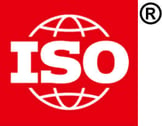The electric motor industry is undergoing a quiet revolution, driving a relentless push for energy-efficient electric motors with compact, high-performance designs. One key driver in this evolution is the yokeless axial flux motor, a revolutionary architecture that redefines power density and torque density across various applications.
At the core of the yokeless axial flux motor technology is a unique hybrid stator design that enables twin rotors to maximize magnetic flux transfer and efficiency. However, using traditional laminated steel stators alone presents challenges in manufacturing efficiency and magnetic performance. But what if we could enhance this stator design by combining two fundamental motor materials—Soft Magnetic Composite (SMC) materials and laminated steel? This hybrid approach unlocks a new frontier in electric motor design optimization.
What Are Soft Magnetic Composite (SMC) Materials?
Soft Magnetic Composite (SMC) materials are made from ferromagnetic particles coated with an insulating layer and compacted together. This unique structure offers several advantages:
 Isotropic Magnetic Properties: SMC materials provide 3D magnetic performance, making them ideal for complex motor geometries.
Isotropic Magnetic Properties: SMC materials provide 3D magnetic performance, making them ideal for complex motor geometries.- Reduced Eddy Current Losses: The insulating layer minimizes eddy current losses, improving motor efficiency at high frequencies.
- Ease of Manufacturing: SMC materials can be molded into intricate shapes, reducing assembly complexity and maintaining material efficiency (>95%).
- Improved Thermal Management: Their structure allows for better heat dissipation, critical for high-performance applications.
- Sustainability: The Powder Metal process is at least 17% more energy-efficient than other metal-forming technologies. Combined with easy recyclability, SMC materials promote a circular economy by simplifying the recovery of iron, copper, and magnets.
However, SMC materials have some limitations:
- Lower Saturation Flux Density: The insulating iron powder coating and inherent porosity reduce saturation flux density compared to laminated steel.
- Lower Permeability: The distributed air gap from SMC’s structure slightly lowers overall permeability.
What is Laminated Steel?
Laminated steel has been the cornerstone of electric motor manufacturing for decades. It consists of stacked thin sheets, or laminations, of steel insulated from each other to reduce eddy current losses. Key benefits include:
 High Magnetic Performance: Laminated steel offers high saturation flux density and high permeability in the plane of the laminations.
High Magnetic Performance: Laminated steel offers high saturation flux density and high permeability in the plane of the laminations.- Cost Efficiency: It is widely available and cost-effective due to optimized stamping operations, particularly in radial flux motors.
Yet, laminated steel stators have drawbacks:
- Manufacturing Complexity: Producing and stacking laminations for complex 3D geometries requires precise alignment and is labor-intensive.
- Material Waste: Cutting and stacking laminations results in significant material losses, often exceeding 40%.
- Thermal Challenges: The interlayer insulation can impede heat dissipation, limiting motor performance.
What Happens When You Combine SMC and Laminated Steel?
This brings us to a fascinating breakthrough—what if we merge the strengths of SMC materials and laminated steel to create a hybrid stator design? Let’s explore some key benefits:
 Optimized Magnetic Performance: Laminated steel provides high saturation flux density, while SMC materials reduce eddy current losses and enable 3D magnetic flux paths.
Optimized Magnetic Performance: Laminated steel provides high saturation flux density, while SMC materials reduce eddy current losses and enable 3D magnetic flux paths.- Complex Geometries: SMC materials allow for intricate motor architectures that laminated steel alone cannot achieve.
- Improved Thermal Management: The heat dissipation properties of SMC materials mitigate the thermal limitations of laminated steel stators.
- Cost-Effective Manufacturing: By strategically combining materials, manufacturers can reduce costs while enhancing motor efficiency.
The Future of Electric Motors is Here
Integrating SMC materials and laminated steel into yokeless axial flux motor designs represents a paradigm shift in electric motor engineering. This hybrid approach leverages the best of both technologies: the efficiency and flexibility of Soft Magnetic Composite materials and the high magnetic performance of laminated steel.
At Horizon Technology, we’ve taken this innovation even further—demonstrating a 3X increase in permeability with no additional core losses compared to traditional SMC materials. More importantly, we’ve achieved significant manufacturing efficiencies that redefine what’s possible in next-generation electric motor design.
Commitment to Innovation
The yokeless axial flux motor stands as a testament to the power of innovation in electric motor design. By pioneering novel material combinations like SMC + laminated steel, Horizon Technology has unlocked unprecedented performance and design versatility. As the industry embraces these advancements, one thing is clear: the future of electric motor technology is as dynamic and exciting as the energy it helps harness.



